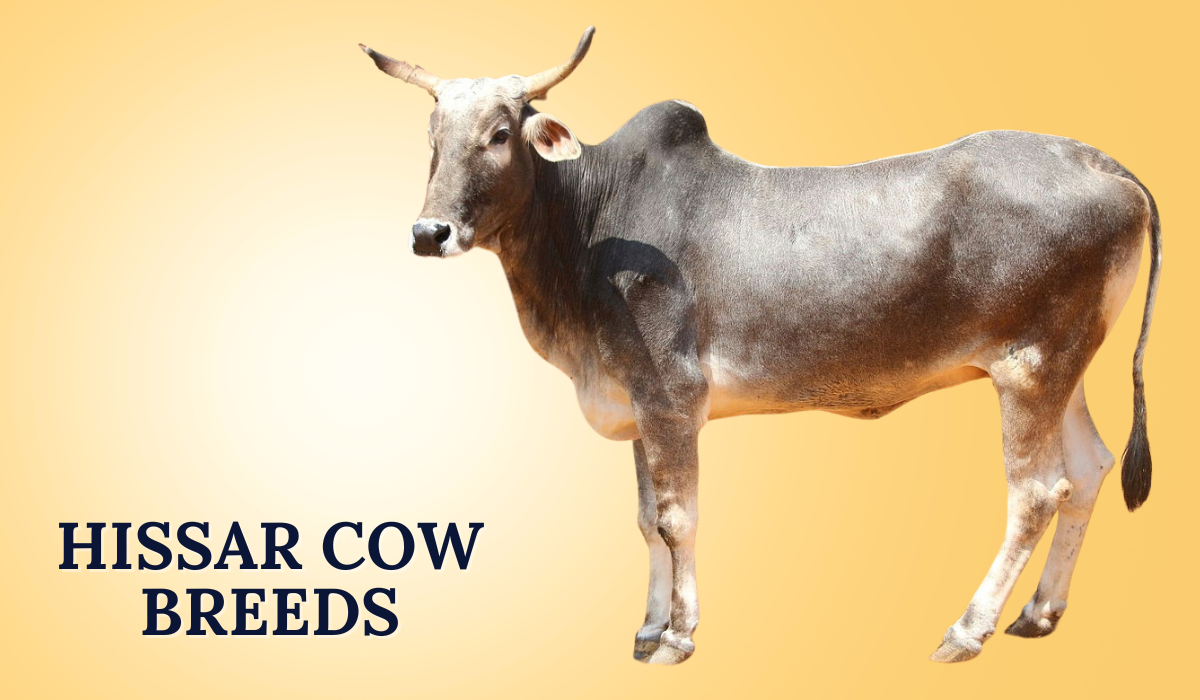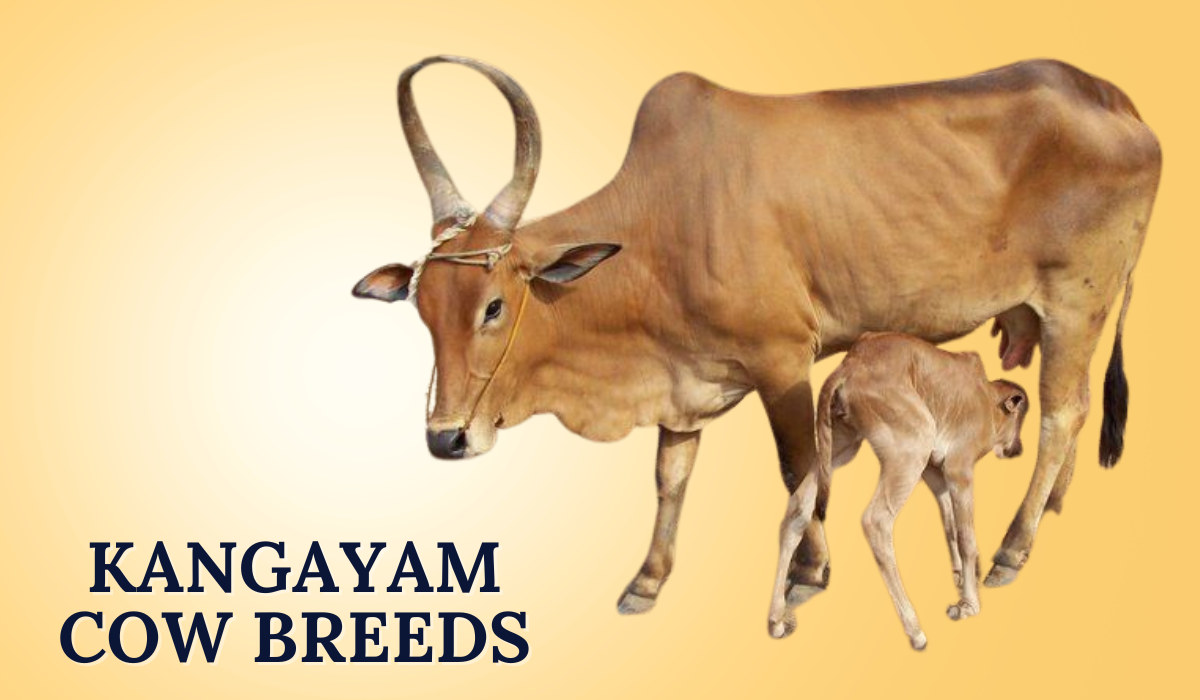Hissar cow breeds in India, originating from Haryana, are renowned for their exceptional dairy production and adaptability. These cows are primarily raised in the Hisar district, known for its rich tradition of cattle farming. With a medium build, strong legs, and a distinct hump, they are highly valued for their resilience.
Hissar cows are efficient milk producers, and their milk is rich in essential nutrients. This makes it a staple in many households. They contribute significantly to rural livelihoods and the dairy industry across India.
These cows are popular among farmers due to their ability to thrive on minimal resources. They are especially suited for arid and semi-arid regions, where resources are scarce. Their adaptability and efficiency make them an excellent choice for Indian farmers.
The Hissar cow breeds in India also play a crucial role in sustainable agriculture. These cows are hardy and can work effectively in fields while adapting well to harsh environments. Farmers widely use their dung as organic manure, which supports eco-friendly farming practices. Scientists and the government are actively preserving and improving these breeds through breeding programs and initiatives. Such measures aim to enhance their milk productivity while maintaining their genetic traits. As symbols of India’s agricultural heritage, Hissar cows continue to be an integral part of rural prosperity and cultural significance.
Key Characteristics and Milk Production of Hissar Cows
The Hissar Cow Breeds in Haryana are medium to large-sized cows with a distinctive reddish-brown or light gray coat. Their strong muscular build allows them to perform heavy-duty tasks in addition to providing high-quality milk. One of the most notable features of these cows is their ability to produce a substantial amount of milk daily. The Hissar Cow Breed produces an average of 10 to 12 liters of milk per day. This can vary based on their diet, health, and management practices.
The milk from Hissar cows is known for its high butterfat content. This makes it ideal for producing ghee, butter, and other dairy products. Rural households use it regularly, and it sells at a premium in urban markets. The price per liter reflects its superior quality. It is often higher than the price of hybrid cow milk. Bulk pricing for Hissar cow milk is competitive in areas with a high demand for organic dairy products.
Hissar cow milk offers numerous benefits for farmers and consumers. It aids digestion, strengthens immunity, and improves overall nutrition. Rich in proteins and nutrients, the milk is highly nutritious. It enhances physical energy and vitality, especially in males. Its role as a natural energy source supports muscle health effectively.
Health and Disease Resistance of Hissar Cows
The Hissar Cow Breed is renowned for its resilience and natural resistance to many cattle diseases. This quality makes them an ideal choice for farmers in Haryana and other states who deal with climate extremes and varying disease prevalence. Although no breed is entirely immune, these cows resist common diseases such as mastitis and foot-and-mouth disease more effectively when farmers provide proper care.
Preventative measures such as vaccinations, balanced nutrition, and routine veterinary care help mitigate the risk of Hissar Cow Breeds disease, ensuring a healthy herd. One of the breed’s key advantages is its adaptability to harsh environmental conditions. This resilience contributes to their high fertility rate, with a reliable cycle of Hissar Cow Breeds pregnancy and healthy Hissar Cow Breeds babies. Farmers often value this aspect, as it allows them to expand their herds sustainably and maintain a steady milk supply.
Additionally, there has been growing interest in Hissar Cow Breeds donation programs aimed at supporting marginalized farmers. Such initiatives provide these hardy cows to farmers who need an affordable and sustainable source of milk and income. These programs not only enhance livelihoods but also promote the preservation of this indigenous breed.
Economic and Health Benefits of Hissar Cow Milk
The Hissar Cow for Milk is a crucial aspect of Haryana rural economy. The milk is not only a primary source of nutrition for farming families but also a significant contributor to household income. The Hissar Cow Breed milk price per litre in India varies based on regional demand and the cow’s diet, but it is generally competitive and attractive to consumers who prefer organic dairy products. The milk’s richness in vitamins, calcium, and other nutrients makes it a healthier alternative to milk from crossbreeds.
From an economic perspective, investing in Hissar cows provides farmers with consistent returns, thanks to the high-quality milk they produce. Beyond its nutritional value, the Hissar Cow Breeds milk benefits for skin are also noteworthy. Many traditional remedies use milk to improve skin tone and texture because people believe it moisturizes and heals the skin. This has led to its inclusion in natural skincare products, further enhancing its value.
For male health, the Hissar Cow Breeds milk benefits for males include promoting muscle recovery, enhancing stamina, and serving as a natural supplement to maintain strength and vitality. These benefits make it a preferred choice for fitness enthusiasts and those recovering from physical exertion.
The Future of Hissar Cow Breed
The Hissar Cow Breeds in Haryana are a testament to the region’s rich agricultural history and the importance of indigenous in sustainable farming. Their affordability, with a Hissar Cow Breeds price under 50000, makes them an attractive option for small-scale farmers. Their high milk yield, disease resistance, and multiple health benefits make them a cornerstone of dairy farming in India.
Efforts to conserve and promote these cows, including Cow Breeds In India programs and awareness campaigns, are vital for their continued prosperity. As the demand for organic, nutrient-rich dairy products grows, the Hissar Cow Breeds milk price per litre in India is likely to rise, benefiting farmers who prioritize quality over quantity.
Whether for milk production, agricultural labor, or breeding, the Hissar cow remains an invaluable asset to Indian agriculture. By supporting local breed like the Hissar cow, we can ensure a sustainable and prosperous future for the rural economy while preserving the heritage of indigenous livestock.



